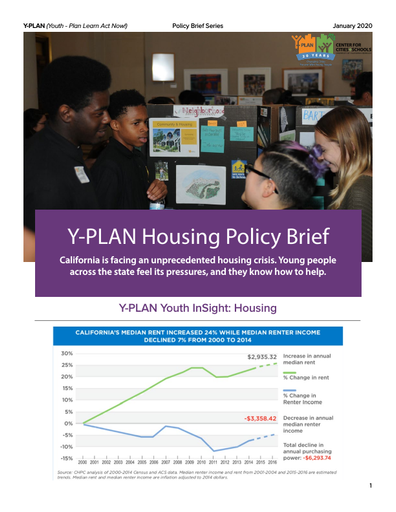

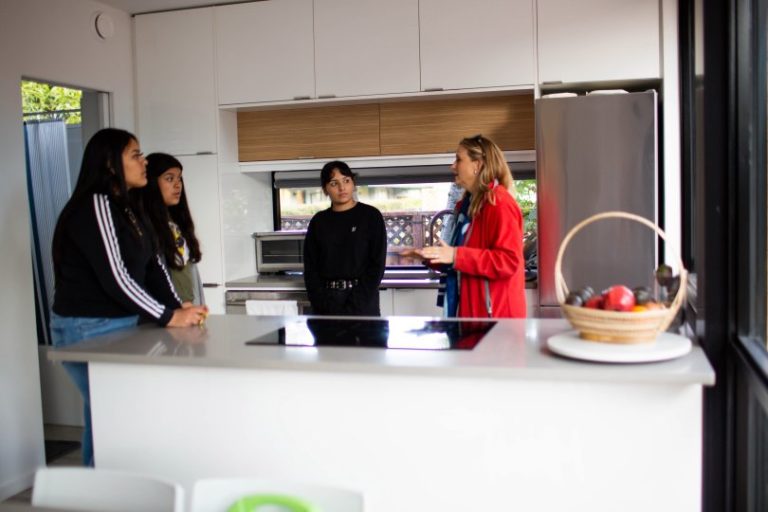

Students Partner With Facebook to Build Affordable Housing
High school students took a plan for housing for low income families that they took to Facebook and got donations to create this project.
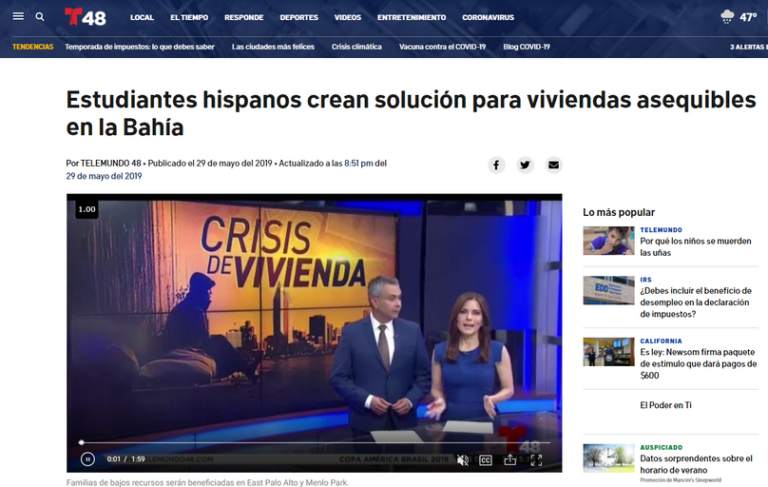
Estudiantes hispanos crean solución para viviendas asequibles en la Bahía
Students take a plan for housing for low income families to Facebook, and get funding for it. In Spanish.
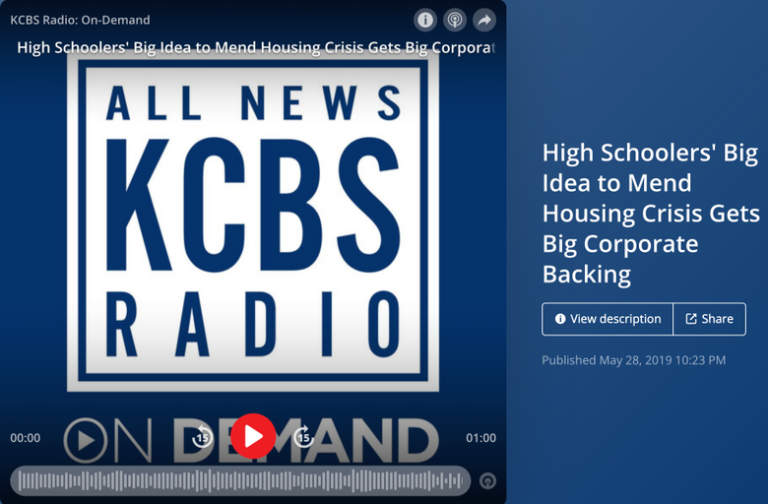
High Schoolers’ Big Idea to Mend Housing Crisis Gets Big Corporate Backing
A million-dollar pilot project is aiming to take a bite out the Bay Area’s housing crisis by making accessory dwelling units more affordable. KCBS Radio reporter Keith Menconi says much of the funding is coming from Facebook, but the idea for the plan was cooked up by low-income youth.
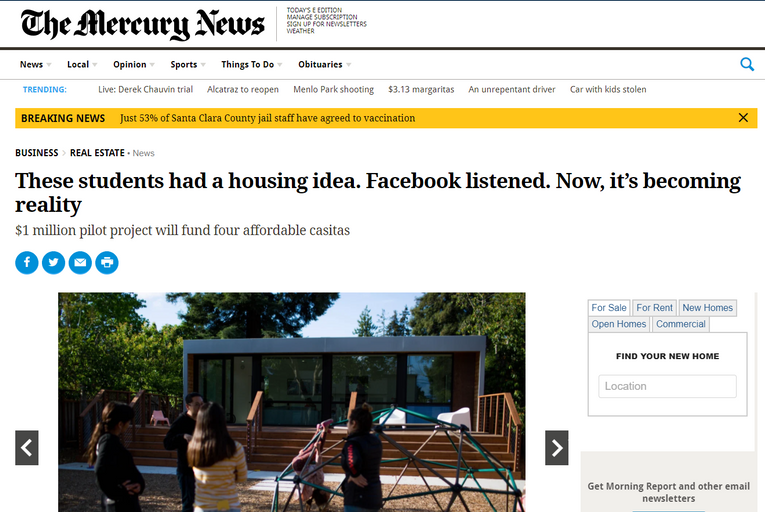
These students had a housing idea. Facebook listened. Now, it’s becoming reality
High school students took a plan for housing for low income families that they took to Facebook and got donations to create this project.
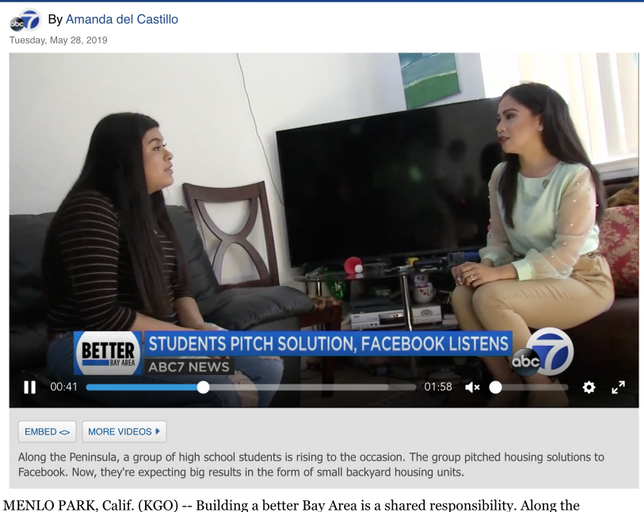
Bay Area students pitched housing solution to Facebook, social media leader listened
High school students took a plan for housing for low income families that they took to Facebook and got donations to create this project.
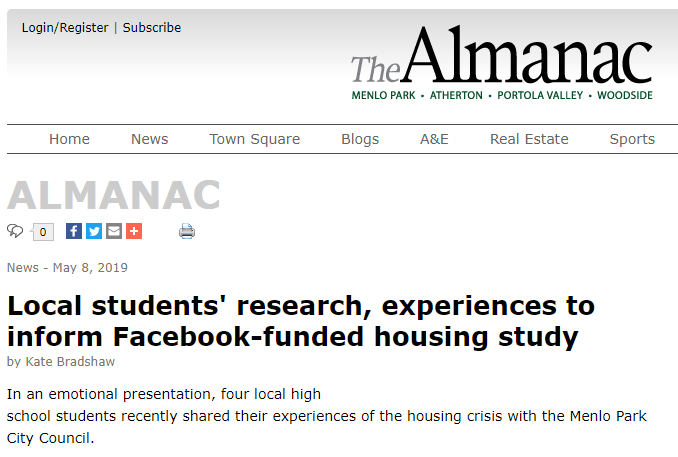
Local students’ research, experiences to inform Facebook-funded housing study
In an emotional presentation, four local high school students recently shared their experiences of the housing crisis with the Menlo Park City Council
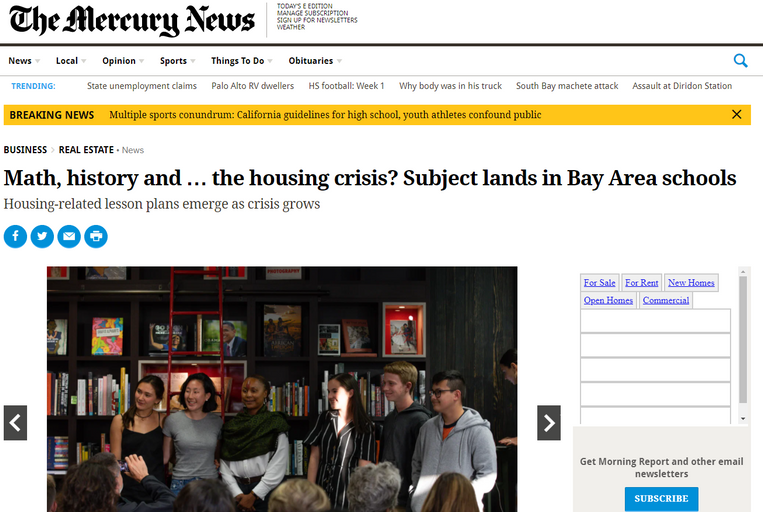
Math, history and … the housing crisis? Subject lands in Bay Area schools
The Mercury News takes a look at all of the work that Y-PLAN Students are doing in the Bay Area to help people gain more access to affordable housing
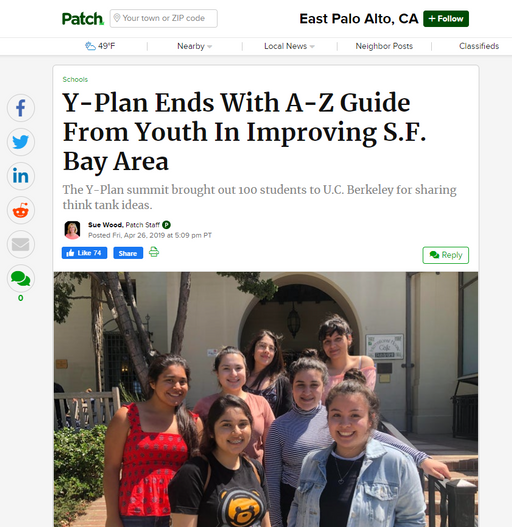
Y-Plan Ends With A-Z Guide From Youth In Improving S.F. Bay Area
San Francisco Bay Area students in the upper echelons of creative thinking put a new spin on “kids will say and do the darndest things” as the brightest stars took to the mastermind campus of U.C. Berkeley for the 2019 Y-PLAN Policy Summit: Planning a More Inclusive and Resilient Region.
A Decade of Action and Insight from Bayview’s Youth and Schools
This report lifts up the partnership of the past decade to examine how this work to engage youth and schools in comprehensive housing development in the Bayview can inform future work. Understanding this landscape can support future work and better alignment of investments, particularly concerning the role of young people and schools in community redevelopment.

Strategy to Engage Youth in San Francisco Planning
This memo analyzes San Francisco Planning Department’s Family Friendly City initiative, which seeks to develop an effective family and youth engagement process to meet the needs of all families in San Francisco. Given the intentional educational experience, children are natural planners that understand their neighborhoods and can provide meaningful feedback for SF Planning. UsingY-PLAN (Youth…
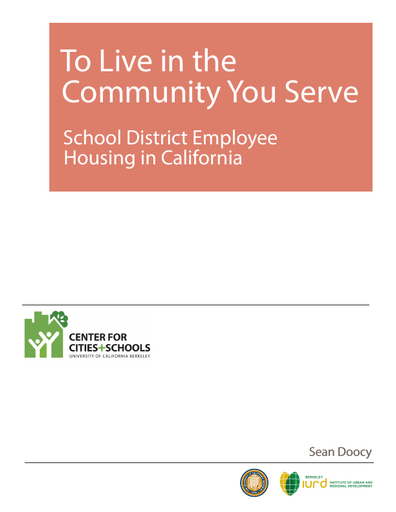
To Live In The Community You Serve: School District Employee Housing In California
The current housing affordability crisis in California, coupled with stagnant wages for teachers and school district staff, has contributed to high teacher turnover and widespread teacher shortages. In response, school districts have begun to develop employee housing programs as a strategy to recruit and retain high-quality teachers and staff. This study provides a detailed look…
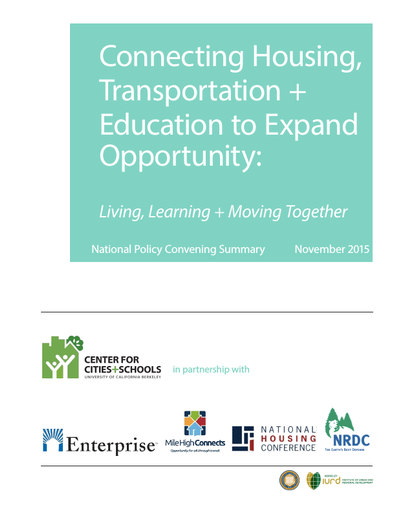
Connecting Housing, Transportation + Education to Expand Opportunity: Living, Learning + Moving Together
In many parts of the country it is difficult for families, particularly low- or moderate- income families to afford a suitable home in a transit-rich neighborhood with good schools. This report synthesizes the ideas and policy recommendations from a national convening of local, state, and federal stakeholders from across the country on innovative policy and…
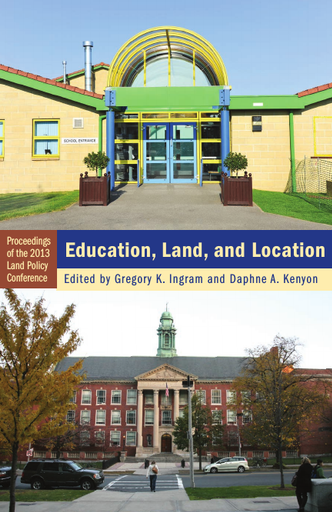
Beyond “Accidents of Geography”: Using Housing Policy to Improve Access to Quality Education
The chapters in this volume explore the links between education, location, and land based on the proceedings of the 8th Annual Land Policy Conference of the Lincoln Institute of Land Policy. Three policy outcomes are the focus: academic achievement of schoolchildren; racial, ethnic, and socioeconomic segregation; and equality of opportunity, all of which have broad…
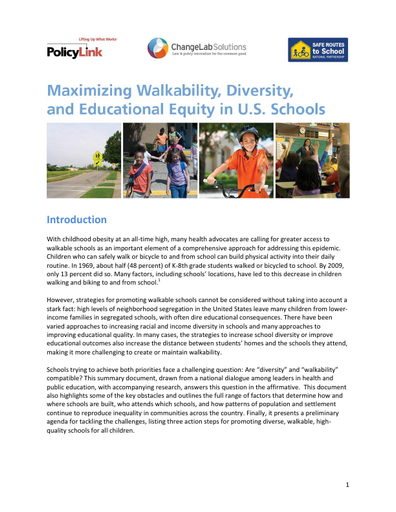
Maximizing Walkability, Diversity, and Educational Equity in U.S. Schools
Schools trying to be integrated and serve their local communities often face a challenging question: Are “diversity” and “walkability” compatible? This summary document, drawn from a national dialogue among leaders in health and public education, with accompanying research, answers this question in the affirmative. The report highlights key obstacles and outlines the full range of factors that…
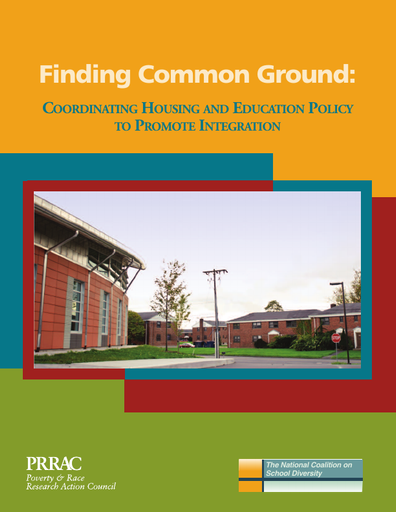
Framing the Connections: Integrating Housing, Transportation, and Education in City and Regional Planning
In this chapter, we describe efforts to connect efforts to improve public education to housing and transportation planning initiatives, particularly through collaborative city-school-regional partnerships. The chapter appears in the 2011 report, “Finding Common Ground: Coordinating Housing and Education Policy to Promote Integration.by the Poverty and Race Research Action Council (PRRAC) and the National Coalition on…
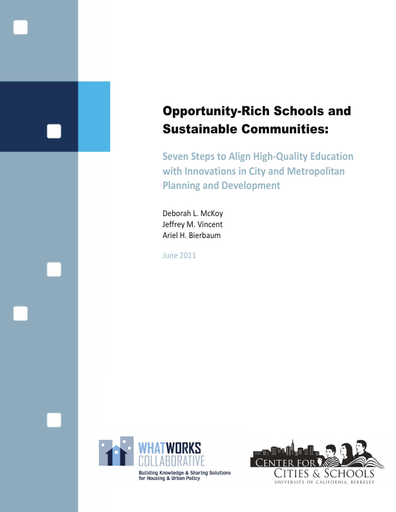
Opportunity-Rich Schools and Sustainable Communities: Seven Steps to Align High-Quality Education with Innovations in City and Metropolitan Planning and Development
In 2010 the What Works Collaborative invited CC&S to examine the ways in which sustainable community planning could work with school leaders to foster positive educational outcomes. The report illustrates policies and strategies at all levels of government are increasingly associating educational outcomes with community planning and housing. Challenges remain for local officials and practitioners trying…
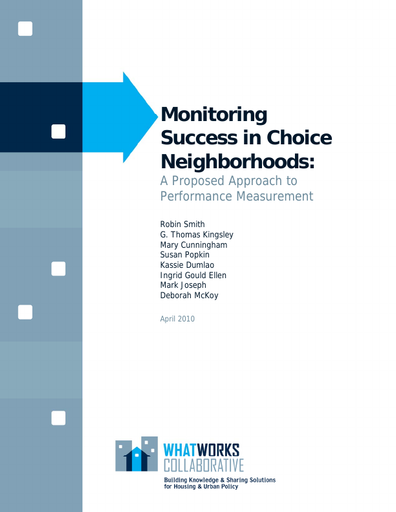
Monitoring Success in Choice Neighborhoods: A Proposed Approach to Performance Measurement
This paper considers how to effectively evaluate outcomes and measure success in comprehensive community transformation efforts, such as the U.S. Department of Housing and Urban Development (HUD)’s proposed Choice Neighborhoods Initiative. It is a product of the Urban Institute and was supported by the What Works Collaborative.
End of content
End of content
